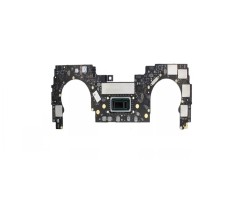How 3D Rendering Transforms Real Estate Marketing Strategies
Real estate marketing has changed a lot over the years. In the past, agents relied on newspaper ads, flyers, billboards, and word-of-mouth to attract buyers.

In the highly competitive real estate industry, captivating visuals are key to attracting potential buyers and investors. Traditional marketing methods, such as static images and blueprints, no longer provide the level of engagement needed to stand out. This is where 3D rendering revolutionizes the game.
By creating hyper-realistic visualizations of existing and conceptual properties, 3D rendering allows real estate professionals to present spaces with stunning detail, accurate lighting, and immersive virtual experiences.
From high-end residential developments to large-scale commercial projects, 3D rendering enhances marketing strategies by providing buyers with a clear, interactive, and emotionally compelling vision of a property before it is built.
The Shift from Traditional to Digital Real Estate Marketing
Real estate marketing has changed a lot over the years. In the past, agents relied on newspaper ads, flyers, billboards, and word-of-mouth to attract buyers. Open houses and printed brochures were key ways to showcase properties. While these methods worked, they had limitations. They were costly, time-consuming, and reached only a small audience.
Today, digital marketing has transformed the industry. With the internet and social media, real estate businesses can now connect with more potential buyers than ever before. Websites, online listings, and virtual tours allow buyers to explore properties from anywhere. Platforms like Instagram, Facebook, and LinkedIn help agents promote listings quickly and at a lower cost.
High-quality images, 3D renderings, and drone photography make homes more appealing online. Digital ads and email marketing target the right audience, making marketing more effective. Search engine optimization (SEO) helps real estate websites rank higher, bringing in more traffic.
Another big change is the use of artificial intelligence (AI) and chatbots. These tools answer customer questions instantly and provide better service. Virtual reality (VR) tours allow buyers to experience a home without visiting in person.
The shift to digital marketing has made real estate faster, smarter, and more affordable. Buyers can find homes easily, and sellers can reach a wider audience. Traditional methods still have value, but digital marketing is now the future of real estate. Agents who embrace these new tools will have a competitive edge in the market.
The Core Benefits of 3D Rendering in Real Estate Marketing
In today's digital world, 3D rendering has become a powerful tool for real estate marketing. It allows buyers to visualize properties realistically before they are built. Here are the key benefits:
Enhancing Visual Appeal & First Impressions
High-quality 3D renders make properties look more attractive. Buyers can see realistic images with proper lighting, textures, and furniture placements. This helps create a strong first impression and generates more interest in the property.
Virtual Property Tours: A New Level of Engagement
With 3D rendering, buyers can take virtual tours of a property from anywhere. Instead of relying on floor plans or 2D images, they can explore the space as if they were physically present. This makes it easier to understand the layout and overall feel of the property.
Customization and Personalization for Buyers
3D rendering allows potential buyers to customize certain aspects of a property. They can see different wall colors, flooring options, or furniture layouts. This personalization makes it easier for them to imagine living in the space.
Faster Decision-Making and Increased Conversions
When buyers can visualize a property, they feel more confident in their decisions. This speeds up the buying process and increases conversion rates. Developers and realtors can sell properties faster with fewer site visits.
Cost Savings & Marketing Efficiency
Traditional property photography and staging can be expensive. 3D rendering eliminates these costs by providing high-quality visuals digitally. It also allows realtors to market properties effectively through online platforms, reaching a wider audience.
3D Rendering for Different Real Estate Segments
3D rendering has become an essential tool in real estate, helping buyers, developers, and investors visualize properties before they are built. Whether it’s a home, a commercial space, or a luxury property, 3D rendering brings ideas to life with realistic images and animations. Here’s how it benefits different real estate segments:
a) Residential Real Estate
For homeowners and real estate agents, 3D rendering makes it easier to showcase properties. Buyers can see how a house will look with furniture, lighting, and landscaping before making a purchase. It helps them visualize different design options and make decisions faster. Developers also use 3D renderings to market under-construction homes, attracting potential buyers early in the process.
b) Commercial Real Estate
Office buildings, retail spaces, and hotels all benefit from 3D rendering. Business owners can see how their workspace or storefront will look before leasing or buying. It also helps architects and designers plan layouts efficiently, ensuring that the space is both functional and visually appealing. For investors, realistic renderings provide a clear understanding of a property’s potential, making it easier to secure funding or attract tenants.
c) Luxury & High-End Properties
Luxury real estate buyers expect top-quality visuals before making a decision. 3D rendering allows high-end properties to be presented in stunning detail, highlighting premium materials, elegant interiors, and breathtaking views. Developers and agents use photorealistic images and virtual tours to market luxury homes, offering clients an immersive experience without the need for in-person visits.
d) Real Estate Development & Pre-Construction Projects
For large-scale real estate projects, 3D rendering is a game-changer. It helps developers and investors see the outcome of their projects before construction begins. Renderings also assist in getting approvals from city planners and stakeholders by clearly showcasing design concepts. Marketing teams use these visuals to generate interest and secure pre-sales, ensuring a project’s success.
How to Get Started with 3D Rendering for Your Real Estate Business
3D rendering is a game-changer for real estate businesses. It helps showcase properties in a realistic and visually appealing way, making it easier for clients to visualize spaces before they are built. If you’re new to 3D rendering, here’s how to get started.
1. Understand the Benefits
3D rendering allows you to create high-quality images of properties, giving potential buyers a clear idea of what a space will look like. It improves marketing, speeds up sales, and reduces the need for physical site visits.
2. Choose the Right Software
There are many 3D rendering tools available, such as SketchUp, Lumion, and V-Ray. Some are beginner-friendly, while others require advanced skills. Start with software that fits your needs and budget.
3. Hire a Professional or Learn the Basics
If you want high-quality results, consider hiring a 3D rendering expert. However, if you prefer a hands-on approach, take online courses or tutorials to learn the basics of rendering.
4. Use High-Quality Textures and Lighting
Realistic images require good lighting and textures. Invest in high-resolution materials and experiment with lighting to create lifelike visuals.
5. Integrate 3D Renders into Your Marketing
Once you have your renders, use them in listings, social media, and advertisements. Virtual tours and walkthroughs can further enhance customer engagement.
By incorporating 3D rendering into your real estate business, you can attract more buyers, enhance your marketing efforts, and stay ahead of the competition.
The End Note
3D rendering has transformed real estate marketing by providing highly realistic, engaging, and immersive property visualizations. From residential homes to commercial developments and luxury properties, it enhances buyer experience, accelerates decision-making, and streamlines marketing efforts.
As digital tools continue to evolve, real estate professionals who integrate 3D rendering into their strategies will gain a competitive edge, attracting more buyers and closing deals faster.
Whether through virtual tours, photorealistic images, or interactive customization options, 3D rendering is shaping the future of real estate marketing, making it more efficient, cost-effective, and visually compelling.
What's Your Reaction?




















